- Home
- Thomas Keneally
The Great Shame: And the Triumph of the Irish in the English-Speaking World
The Great Shame: And the Triumph of the Irish in the English-Speaking World Read online
Acclaim for THOMAS KENEALLY
and THE GREAT SHAME
“Like all his books, it is written with eloquence and passion, and has been richly and solidly researched.”
—San Francisco Chronicle
“Stirring and poignant…. Keneally’s strength is rich ambient detail. His research was scrupulous and copious, and it shows.”
—The Philadelphia Inquirer
“Powerful, understated … [Keneally] brings to this narrative his own special talents and vision…. He has a refined sense of place, evoking the beauty and grandeur of the Australian landscape as well as the squalor of prisons and Irish-American ghettoes.”
—Pete Hamill, National Review
“Let a master like Thomas Keneally take on this dramatic and poignant chapter in history and it becomes something vivid and heartbreaking and very much alive…. The Great Shame is a work of remarkable optimism: a story that reminds us how often human achievement is measured not in conquest or in riches but in simple survival against the odds.”
—Salon
“A dazzling array of characters, plots, subplots and themes…. As he did in Schindler’s List, in this narrative Keneally puts a face and a story to a shame and a heroism we should never forget.”
—The Atlanta Journal-Constitution
“Keneally has a gift for heroic stories.”
—The Washington Post
“Like Winston Churchill’s History of the English-Speaking Peoples, this is an epic of war, prison breaks, betrayal, high seas pursuit and a gallery of odd-as-life heroes and villains.”
—The San Diego Union-Tribune
“[The Great Shame] represents a phenomenal amount of research on four continents…. A major work of Irish history.”
—The Seattle Times
“A copiously researched and gracefully written history…. The Great Shame renders well both the continuities and the sharp breaks in Irish revolutionary history…. Astounding adventures.”
—The Nation
“Keneally’s The Great Shame reaches beyond the specifics of Ireland and her sad, lost children to tell a much bigger story.”
—Milwaukee Journal Sentinel
“An impressive work that anyone interested in Irish history will want to read.”
—St. Louis Post-Dispatch
“[Keneally’s] strength is his rich detail born of thorough research. He paints wonderfully human portraits.”
—Fort Lauderdale Sun-Sentinel
Contents
List of Illustrations
Preface
Maps
BOOK I
1 HUGH LARKIN’S IRELAND
2 THE SHIPPING OF IRELAND, AND THE EXILE OF CHAINS
3 ASSIGNING IRELAND
4 THE LIMITS OF LOCATION
5 IRELAND AND THE WHITBY WOMEN
6 THE LASS FROM THE FEMALE FACTORY
7 IRELAND YOUNG AND OLD
8 A FOND FAREWELL TO THE WHITE POTATOES
9 A THOUSAND FAREWELLS TO YOU, ISLAND OF ST PATRICK
10 FIASCO AND NOBLE GESTURE: THE REBELLION OF YOUNG IRELAND
11 YOUNG IRELAND ON TRIAL
12 SHIPPING YOUNG IRELAND
13 BY ORDER OF GREAT DENISON
14 YOUNG IRELAND AND THE PROFANE COLONISTS
15 LOCKED WITHIN THE PYRAMID
16 THE SKELETON AT THE FEAST
BOOK II
17 YOUNG IRELAND AND THE ISMS OF YANKEEDOM
18 IRELAND AND THE BLOODY ARENA
19 FAUGH-A-BALLAGH
20 THE CHICKAHOMINY STEEPLECHASE
21 WOEFULLY CUT UP
22 LET ME HAVE IDAHO
23 GLORIO, GLORIO, TO THE BOLD FENIAN MEN
24 RE-MAKING MONTANA; VIOLATING CANADA
25 FENIANS TRANSPORTED
26 THE FENIANS OF THE DESERT COAST
27 FENIANS AT LARGE
28 HOME RULE AND DYNAMITE
29 THE FENIAN WHALER
30 PERTH REGATTA DAY
31 REPUBLICAN CHRIST
Acknowledgements
Notes
Bibliography
Photo Inserts
About the Author
Other Books by This Author
Also by Thomas Keneally
List of Illustrations
A line of convicts at the Hyde Park Barracks (Mitchell Library, Sydney)
The convict shepherd meets the natives (National Library of Australia, Canberra, Australian Capital Territory)
Thomas Meagher senior (Archives Office of Tasmania)
Daniel O’Connell (National Library of Ireland)
O’Connell comes home from prison (Illustrated London News, National Library of Ireland)
William Smith O’Brien (National Library of Ireland)
John Mitchel (Mitchell Library, Sydney)
Dromoland Castle (Judith Keneally)
John Martin (National Library of Ireland)
Eva O’Doherty (Poems by Eva of the Nation, 1909)
Hugh Larkin’s ticket-of-leave (New South Wales State Archives)
Hugh Larkin’s conditional pardon (New South Wales State Archives)
Famine burial (Illustrated London News, National Library of Ireland)
Woman begging at Clonakilty (Illustrated London News, National Library of Ireland)
The day after an eviction (Illustrated London News, National Library of Ireland)
The widow Connor and her dying child (Illustrated London News, National Library of Ireland)
The village of Tullig (Illustrated London News, National Library of Ireland)
Judy O’Donnel’s habitation under the bridge at Doonbeg (Illustrated London News, National Library of Ireland)
The village of Moveen (Illustrated London News, National Library of Ireland)
The central soup depot, Barrack street (Illustrated London News, National Library of Ireland)
Miss Kennedy distributes clothing at Kilrush (Illustrated London News, National Library of Ireland)
Bridget O’Donnel and her children (Illustrated London News, National Library of Ireland)
The affray at Widow McCormack’s house (Illustrated London News, National Library of Ireland)
Smith O’Brien and Widow McCormack (Illustrated London News, National Library of Ireland)
O’Brien conveyed back to prison (Illustrated London News, National Library of Ireland)
O’Brien in the dock (Illustrated London News, National Library of Ireland)
William Smith O’Brien, Thomas Francis Meagher and the Governor of Kilmainham gaol (Kilmainham Gaol Museum)
Clonmel Courthouse (Lawrence Collection, National Library of Ireland)
Swift, off Table Mountain (Archives Office of Tasmania)
The mountains behind Hobart (Mitchell Library, Sydney)
Sir William Denison (Archives Office of Tasmania)
Dr John Hampton (Archives Office of Tasmania)
Darlington Penal Station (Archives Office of Tasmania)
The human railway (Archives Office of Tasmania)
The mastiffs of Eaglehawk Neck (Archives Office of Tasmania)
Dismal and lovely Port Arthur (Archives Office of Tasmania)
Smith O’Brien’s cottage, Port Arthur (Archives Office of Tasmania)
Elwin’s Hotel, New Norfolk (Archives Office of Tasmania)
Brian Bennett (Archives Office of Tasmania)
Catherine Bennett (Archives Office of Tasmania)
John Mitchel’s sketch of Meagher’s home, Lake Sorell (Archives Office of Tasmania)
Nicaragua Sm
yth (John Mitchel’s Jail Journal)
Eva of the Nation’s passport to travel to Paris (O’Doherty Papers, John Oxley Library, Brisbane)
The Famine remnant (Lawrence Collection, National Library of Ireland)
Tom Larkin and his daughter Minnie Mae Larkin (Martin family)
Eviction: planning the operation; moving in; the ram breaches the wall (Lawrence Collection, National Library of Ireland)
Smith O’Brien’s statue (Lawrence Collection, National Library of Ireland)
Captain Thomas Francis Meagher in Zouave’s uniform (Archives Office of Tasmania)
Corcoran directs ‘The Gallant Charge of the “69th” ’ (Harry T. Peters Collection, Museum of the City of New York)
General Meagher at the Battle of Fair Oaks (Miriam and Ira D. Wallach Division of Art, New York Public Library, Astor, Lenox and Tilden Foundations)
The Battle of Fredericksburg (Miriam and Ira D. Wallach Division of Art, New York Public Library, Astor, Lenox and Tilden Foundations)
The Army of the Potomac (Miriam and Ira D. Wallach Division of Art, New York Public Library, Astor, Lenox and Tilden Foundations)
Kevin Izod O’Doherty (Archives Office of Tasmania)
The Fenian headquarters, Union Square (Illustrated London News, National Library of Ireland)
The Fenian and Land War class (Lawrence Collection, National Library of Ireland)
The court martial of a Fenian soldier (Illustrated London News, National Library of Ireland)
Cork Fenians moved into the county gaol (Illustrated London News, National Library of Ireland)
John Boyle O’Reilly (Larcom Collection, New York Public Library) John Casey (Larcom Collection, New York Public Library)
John Kenealy (Larcom Collection, New York Public Library)
James Keilley (Larcom Collection, New York Public Library)
Fremantle and its great white prison (Battye Library, Western Australia)
Bunbury, the Leschenault Channel and the Indian Ocean (Battye Library, Western Australia)
General Meagher (Montana Historical Society Archives)
Virginia City in 1866 (Montana Historical Society Archives)
The Governor’s residence, Idaho Street (Montana Historical Society Archives)
The ‘Acting One’s’ executive office (Montana Historical Society Archives)
Helena, Montana (Montana Historical Society Archives)
Elizabeth Meagher (Montana Historical Society Archives)
General Meagher wins the symbolism battle (Montana Historical Society Archives)
The people of Sydney welcome Prince Alfred’s Galatea (Illustrated Sydney News, Mitchell Library, Sydney)
The shooting of Prince Alfred at Clontarf (Illustrated Sydney News, Mitchell Library, Sydney)
Labourer’s cottage, 1870s (Lawrence Collection, National Library of Ireland)
The convict-built pier, Fremantle (Battye Library, Western Australia)
Grand parade in honour of the amnestied Fenians (J. Clarence Davies Collection, Museum of the City of New York)
The escape of the Fenian prisoners (Australasian Sketcher, Mitchell Library, Sydney)
Catalpa’s flag (Michael Flynn, Curator, National Museum of Ireland, from its exhibition on Fenianism)
John Goulding’s grave on the south coast of New South Wales (Thomas Keneally)
The dry-goods department store of Dillon and Kenealy (Huntington Library, San Marino, California)
John Kenealy in his sixties (Huntington Library, San Marino, California)
Preface
After Steven Spielberg’s film Schindler’s List revived interest in the story that I had told in my novel, I was frequently thanked for having documented on a human scale, through jaunty, disreputable Oskar Schindler, the Jewish catastrophe of the Second World War. I had stumbled on the story, written it with passion because it was a great tale, and now with a delighted and slightly guilty bemusement found that people, particularly the Jewish community throughout the world, were talking to me as if I had done something larger—had to an extent validated the past for those who had lived through it, and had restored their history to their children.
What of my own past? I was Australian, and I knew that my name and ancestors were Irish. I knew vaguely that I had some forebears who were convicts, one of them a John Kenealy who served time in Western Australia as a political prisoner. I discovered too that I had married the great-granddaughter of what one historian calls ‘a protest criminal,’ a so-called Ribbonman—sent from Ireland to Australia for life in the decade before the Irish Famine, which began in 1845. This, if it is a boast, is not such an uncommon one in Australia, even if earlier generations of Australians would have suppressed what they then perceived as genealogical stains. I knew that, throughout the nineteenth century, until the last shipload of Fenian prisoners arrived in Western Australia in 1868, and until the last political prisoner had died in exile well into the twentieth century, Australia was the potential punishment that hung over all protest, political activism and revolt in the British Empire—over the Chartists of Britain, the French habitants of Lower Canada and the republicans of Upper Canada, but in particular over gestures of protest and rebellion in Ireland.
I wanted to try to tell the tale of the Irish in the new world and the old through the experiences of those transported to Australia for gestures of social and political dissent. The suppression of dissent in Ireland of course marked both Ireland itself, the point of departure, and Australia, the shore of exile. But Australia’s place as a zone of sub-Antarctic political punishment would also influence the intense and fatally riven Irish politics of emigrant societies in the United States, Britain and Canada, and I wanted to try to tell some of that tale as well.
Unlike the humble criminal with whom I begin this book, internationally renowned Irish figures serving time in Australia would sometimes be pardoned or, in more graphic cases, participate in highly organised escapes, arriving again in the northern hemisphere, above all in the United States. There they would exploit in various ways their lustre, and marshal for ‘the Irish cause’ the sympathy of America and of liberal thought everywhere.
In the twentieth century the reputation of the better known of these prisoners has remained stronger in Ireland and America than in Australia. The famed and tragic Kennedy boys of Boston, for example, would be pointed by the Boston Irish political culture to the speeches of former Tasmanian life-sentenced convict and US general, Thomas Francis Meagher. John Mitchel’s Jail Journal remains a classic of penal experience, particularly in Ireland. In Glasnevin Cemetery in Dublin, the grave of Terence Bellew McManus, whose funeral procession—from San Francisco down to the Central American isthmus and across the Atlantic to Dublin—must have been one of the longest funerary events in history, is still honoured and a place for pilgrimage.
But the document which made it inevitable that I should write this book is an obscure one—far more so than any attaching to the spectacular careers of General Thomas Francis Meagher and of John Mitchel, famous friends in Australian exile, famous opponents in the American Civil War. The item which provoked this narrative is a far humbler article than the National Library of Ireland’s holdings of the letters of the Irish nobleman prisoner William Smith O’Brien, whose statue stands near O’Connell’s in the centre of Dublin; or than the literary and civic flourishes of the spendid Fenian escapee of 1869, John Boyle O’Reilly, in his adopted city of Boston.
The document which stimulated this book is an 1840 plea from an Irish peasant woman, Esther Larkin, for reunion with her husband. Using the services of a scrivener who knows how to phrase petitions to Dublin Castle, Esther Larkin asks that she and her children should be sent to her husband, who is serving a life sentence in Australia. It is a plea which seemed to me to combine the required feudal subservience with an understated poignancy of loss.
The humble petition of Esther Larkin to His Excellency Viscount Ebrington, Lord Lieutenant General and General Governor of Ireland.
Humbly herewith—
Your Excellency’s Petitioner is the wife of Hugh Larkin who was sent out to New South Wales under the Rule of Transportation for life, from Galway Assizes in July, 1833 under a charge of Terry-Altism.
Herewith, Petitioner has two male children one ten years old and the other seven. Petitioner’s age 28 years. Under the above circumstances Petitioner begs of your Excellency to look with the eyes of pity on herself and children and order them a free passage to New South Wales and Your Excellency’s Petitioner will forever faithfully pray.
her
Esther X Larkin.
mark
Laurencetown, 7th February, 1840
It is this Hugh Larkin from whom my wife and daughters are descended. I hope that, through exploring Larkin and his transported brethren, both the obscure and the more famous, I may show at least some of the experience of the Irish diaspora, and some of the crucial events in the new world’s societies. I also hope that through the people of this book some of the causes of the greatest nineteenth-century Irish tragedy will be better understood. For during the course of this narrative, the population of Ireland, between the census of 1841 and the census of 1881, declined to a level barely above half of what it had been—a catastrophe unique in Europe.
It has been delightful to search out these connections, and to live in hope that the reader will be as fascinated by this material as is the writer himself.
Tom Keneally
BOOK I
1
HUGH LARKIN’S IRELAND
TERRYALTISM:
Up to the moment we write, there have been … about thirty unfortunate individuals convicted under the Whiteboy Act, and therefore destined to spend the remainder of their lives in a clime far, far distant from their native homes—from the land which holds all that is dear to them in the world.
Galway Free Press,
31 March 1832
For English and Anglo-Irish noblemen, the post of Lord Lieutenant of Ireland was both a challenge and a reward. The Lord Lieutenant was chief executive of Britain’s most ungovernable kingdom but also the British monarch’s representative, and the centre and apogee of Irish society. In the bright July of 1833, the Lord Lieutenant happened to be a friendly and reckless 73-year-old womaniser named Richard Colley Wellesley, 2nd Earl of Mornington. He had the benefit of being the elder brother of the Duke of Wellington, conqueror of Napoleon and former Tory Prime Minister. For the mass of Irish peasants, it did not matter a great deal who held the post. The known face of their landlord or his agent, how much land they had to live off, how secure was their tenure, and what they could sell their labour for—these were the intimate and recurrent concerns of their lives. People of quality though, in towns or on their estates in the west of Ireland, wanted to know about the Lord Lieutenant’s movements, levees and recreations.

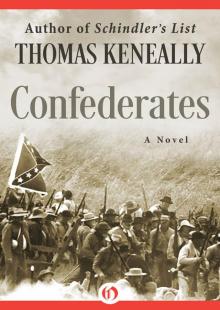 Confederates
Confederates Flying Hero Class
Flying Hero Class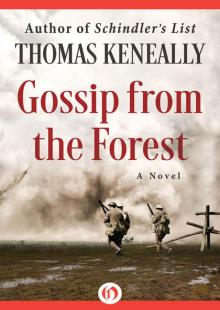 Gossip From the Forest
Gossip From the Forest Schindler's List
Schindler's List Bring Larks and Heroes
Bring Larks and Heroes Australians: Flappers to Vietnam
Australians: Flappers to Vietnam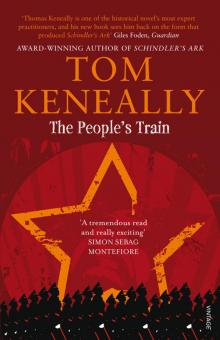 The People's Train
The People's Train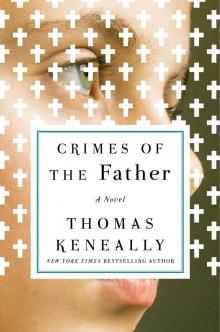 Crimes of the Father
Crimes of the Father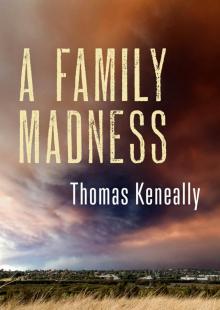 A Family Madness
A Family Madness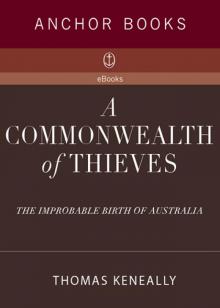 A Commonwealth of Thieves
A Commonwealth of Thieves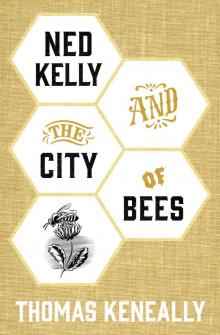 Ned Kelly and the City of Bees
Ned Kelly and the City of Bees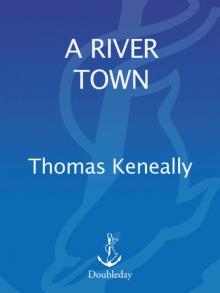 A River Town
A River Town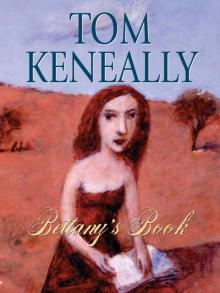 Bettany's Book
Bettany's Book Blood Red, Sister Rose: A Novel of the Maid of Orleans
Blood Red, Sister Rose: A Novel of the Maid of Orleans Victim of the Aurora
Victim of the Aurora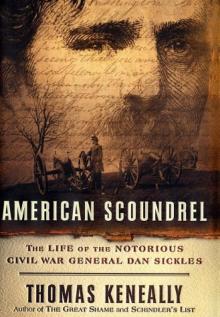 American Scoundrel American Scoundrel American Scoundrel
American Scoundrel American Scoundrel American Scoundrel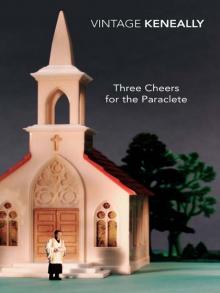 Three Cheers for the Paraclete
Three Cheers for the Paraclete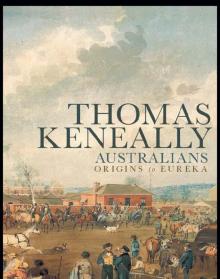 Australians: Origins to Eureka: 1
Australians: Origins to Eureka: 1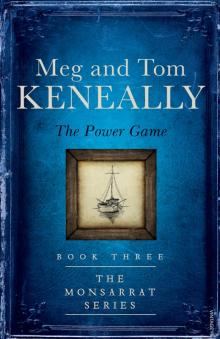 The Power Game
The Power Game The Chant Of Jimmie Blacksmith
The Chant Of Jimmie Blacksmith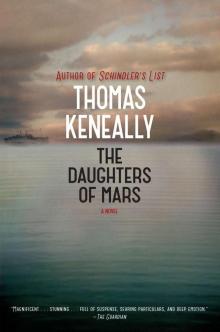 The Daughters of Mars
The Daughters of Mars Searching for Schindler
Searching for Schindler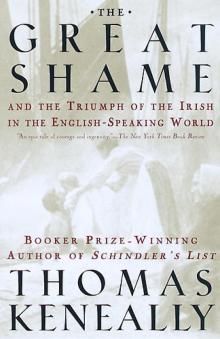 The Great Shame: And the Triumph of the Irish in the English-Speaking World
The Great Shame: And the Triumph of the Irish in the English-Speaking World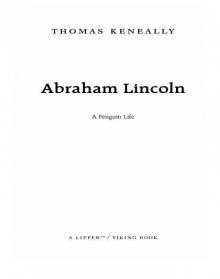 Abraham Lincoln
Abraham Lincoln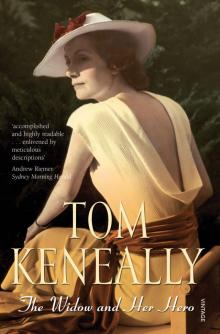 The Widow and Her Hero
The Widow and Her Hero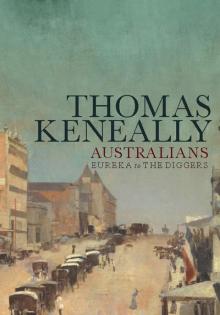 Eureka to the Diggers
Eureka to the Diggers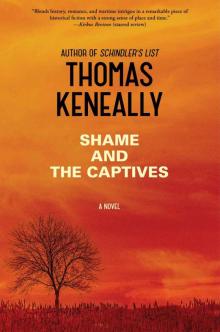 Shame and the Captives
Shame and the Captives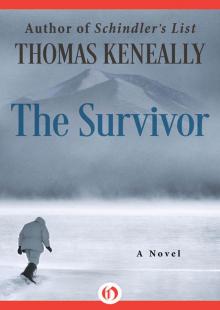 The Survivor
The Survivor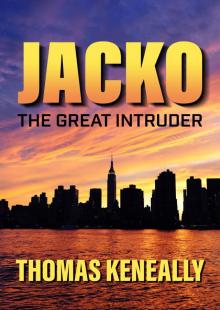 Jacko: The Great Intruder
Jacko: The Great Intruder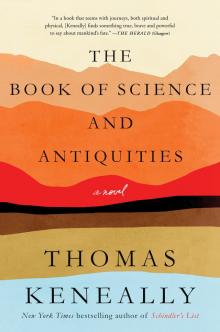 The Book of Science and Antiquities
The Book of Science and Antiquities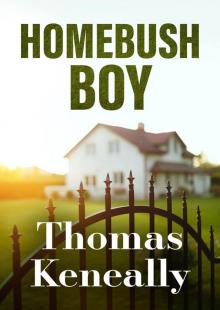 Homebush Boy
Homebush Boy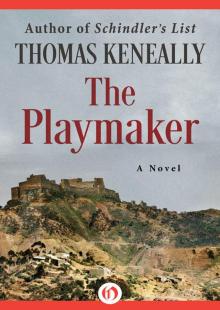 The Playmaker
The Playmaker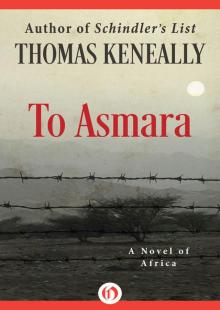 To Asmara: A Novel of Africa
To Asmara: A Novel of Africa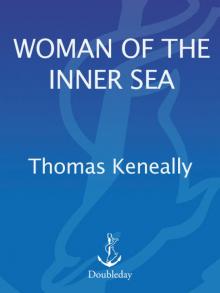 A Woman of the Inner Sea
A Woman of the Inner Sea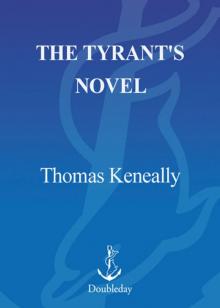 The Tyrant's Novel
The Tyrant's Novel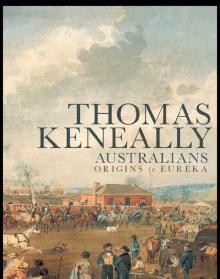 Australians
Australians Schindler's Ark
Schindler's Ark The Soldier's Curse
The Soldier's Curse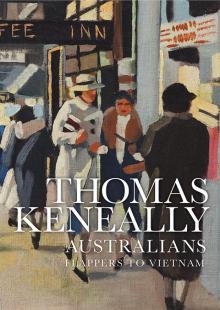 Australians, Volume 3
Australians, Volume 3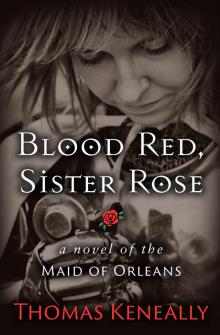 Blood Red, Sister Rose
Blood Red, Sister Rose A Victim of the Aurora
A Victim of the Aurora The Unmourned
The Unmourned Australians, Volume 2
Australians, Volume 2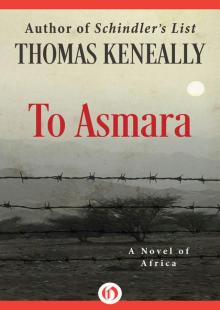 To Asmara
To Asmara